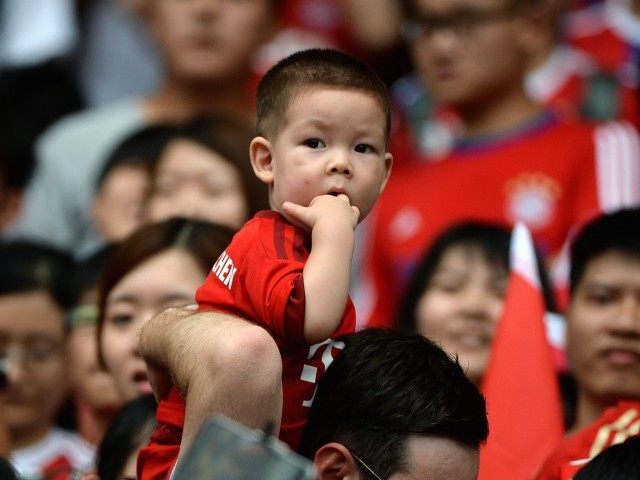China faces a crisis of at least 24 million boys that will never find a mate due to tens of millions of female infanticides during China’s 34 years of one-child “policy” to restrict population growth. With at least 10 percent of China’s young men never being able find a spouse, these “bare branches” may direct their anger at the authorities.
Despite the government allowing families to have two children since 2013, China faces a crisis that Yao Meixiong, Deputy Director of Census with the Fujian Provincial Bureau of Statistics, has calculated will result within five years in producing more single men in China than the entire population of Australia.
With 118.9 boys for every 100 girls by 2020, there will be an extra 9.5 million men aged from 20 to 29, 12.6 million boys under 9-years-old, and millions more in between.
Chinese authorities announced in 2013 they were ending the one-child policy, which cut the population by 200 million from what it would have been, as the birthrate dropped from 4.77 children per female in the 1970s to just 1.58 in 2012. However, the strategy also resulted in massive female infanticide, and now a ticking time bomb from millions of unwed young men threatens to ignite revolutionary violence.
China has a bad history when it comes to lack of eligible wives. Two horrendous floods and a subsequent famine devastated northeastern China in the mid-19th century. According to political scientists Valerie Hudson and Andrea den Boer, female infanticide during the famine was so rampant about 25 percent of young men in the region were “bare branches” as the Chinese call it–unlikely ever to bear fruit in the form of children.
With no hope of families, the bare branches rebelled and formed into huge bands of young male outlaws known as “nien” that wreaked havoc on the Chinese economy. The Nien Rebellion contributed to civil war and economic chaos that led to the end of the Qing Dynasty in 1911.
In addition to the risk of physical violence, worker shortages are also beginning to be a China problem. Because the working age population of China started falling for the first time in 2012, the local joke is, “China will be the first country in the world to get old before it gets rich.” Currently 8.5 percent–114.8 million of China’s 1.3 billion people–are over 65; that number will almost triple to 23.9 percent, or 300 million, by 2050.
China is currently facing very similar demographic challenges as those experienced by Japan two decades ago. Yet while Japan was rich by the time its demographic bomb exploded, China is still poor.
Relaxing the one-child policy will ultimately assist in rebalancing the Chinese economy towards domestic consumption, since younger people tend to spend a higher share of their income than older people. But during the interim decades, the millions of “bare branches” are going to grow in number–and also grow in anger.

COMMENTS
Please let us know if you're having issues with commenting.